kitchen cabinet PVC foam board furniture | Is it Harmful, Experts mixed opinions
Functionality, affordability, and aesthetics are essential, the choice of materials for home furnishings has become crucial. This is especially important in the kitchen, which is not just a place to cook; it’s often the heart of the home.
It’s where families gather, share meals, and create lasting memories. As a result, kitchen cabinets must not only look good but also withstand daily wear and tear.
This is why PVC foam board kitchen cabinets are becoming popular, offering an excellent blend of practicality, affordability, and durability.
Let’s explore why PVC foam board kitchen cabinets are a popular choice. Homeowners and interior designers alike are turning to them.
Recognizing PVC Foam Board Kitchen Cabinets
Polyvinyl chloride, popular as PVC, is a synthetic plastic polymer. Its resilience makes it a popular choice for construction. Affordability and resistance to various environmental factors add to its appeal.
PVC foam board, specifically, is a strong and lightweight material that comes about by pressing and foaming PVC into sheets. This material is becoming popular in kitchen cabinet PVC foam board furniture. It offers several advantages suited to the modern kitchen environment.
Types of PVC Kitchen Cabinets
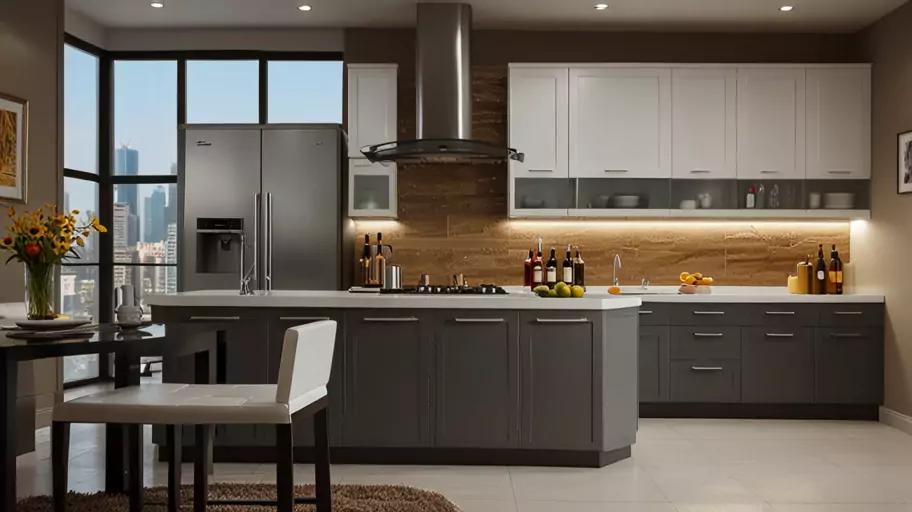
When it comes to PVC kitchen cabinets, there are two primary types:
1. Hollow PVC Boards
Hollow boards are the more economical option among the two. Yet, because they have hollow interiors, they are less sturdy and durable compared to foam boards. These cabinets may be suitable for homeowners looking for a cost-effective short-term solution or for kitchens with minimal heavy-duty usage.
Key Characteristics of Hollow PVC Boards:
- Lightweight and easy to handle.
- Budget-friendly and suitable for low-traffic kitchens.
- Less resistant to wear and tear, making them less ideal for long-term use.
2. PVC Foam Boards
PVC foam boards are thicker and more solid, providing greater durability and strength. They are perfect for kitchen cabinets that represent to withstand high loads and daily use.
Termites, dampness, and stains cannot penetrate foam boards’ strong, durable exterior. This sets them apart from hollow boards. For homeowners looking for a durable, affordable, and low-maintenance material, foam boards are the better choice.
Key Characteristics of PVC Foam Boards:
- Thicker, more durable, and capable of handling heavy use.
- Better resistance to moisture, rot, and termites.
- Long-lasting and low-maintenance, perfect for busy kitchens.
Pros of PVC Foam Board Kitchen Cabinets
Selecting PVC foam board furniture for kitchen cabinets has many advantages over other materials like wood or metal.
Some of the key advantages include:
1. Cost-Effective
PVC foam board cabinets are generally more affordable than traditional hardwood cabinets. This cost-effectiveness makes them an attractive option for homeowners who want quality kitchen cabinets without breaking the bank. PVC foam board offers a cost-effective option without compromising on utility or durability for families remodeling their kitchens.
2. Easy Installation
One of the key benefits of PVC foam board kitchen cabinets is their ease of installation. The boards come ready to fit and are relatively simple to install, making the process quicker and less labor-intensive.
It is best to have a professional installer to guarantee correct fitting and prevent damage. Installing these cabinets, yet, can be doable by homeowners with a little understanding of carpentry.
3. Low Maintenance
A huge selling point of PVC foam board kitchen cabinets is their low-maintenance nature. The material is immune to oils, dampness, termites, and stains.
Unlike wood, it doesn’t absorb liquids or collect dirt as quickly. This makes it incredibly easy to clean and maintain, even in a busy kitchen environment. Wiping down the cabinets with a damp cloth is often sufficient to keep them looking pristine.
4. Durability
PVC foam board cabinets are popular for their durability. The substance is impervious to corrosion, water, oil, and decay. This makes it ideal for kitchens where moisture and spills are frequent occurrences. PVC foam boards don’t decay or distort even after years of use, in contrast to wood.
5. Lightweight
While PVC foam boards are durable, they are also surprisingly lightweight. This makes them easier to handle and install compared to natural wood or metal cabinets, which can be much heavier. Their lightweight nature does not compromise their strength, making them a practical choice for modern kitchens.
Cons of PVC Foam Board Kitchen Cabinets
While PVC foam board kitchen cabinets offer numerous advantages, there are a few drawbacks to consider. It’s critical to consider these drawbacks while deciding whether PVC foam board cabinets are the best option for your kitchen.
1. Heat Resistance
PVC foam board cabinets have a poor heat resistance as in comparison to solid wood or metal cabinets. While they offer better insulation than hollow PVC boards, they aren’t ideal for kitchens with high heat levels. Installing these cabinets next to burners or ovens, where they can be susceptible to direct heat, is not advisable.
2. Aesthetic Limitations
PVC foam board cabinets are available in a variety of hues and textures. Still, they might not have the same visual appeal as real wood.
Some homeowners may prefer the classic, warm look of wooden cabinets, which can be harder to replicate with PVC. Yet, for those who prioritize functionality and affordability, this might be a trade-off worth making.
Installation of PVC Foam Board Kitchen Cabinets

Installation Process
The installation process for PVC foam board kitchen cabinets is relatively straightforward due to their lightweight and ready-to-fit nature. But it is essential to hire professionals or have the proper expertise if you plan to install them yourself.
Incorrect installation can lead to gaps, misalignment, or damage to the boards, reducing their lifespan and affecting their overall look.
Key Installation Tips:
- To fit the arrangement of your kitchen, make sure to cut the boards correctly.
- Use high-quality screws and adhesives designed for PVC foam boards.
- Avoid over-tightening screws, which can crack the material.
- Consider professional help to ensure a seamless and secure installation.
Maintenance Tips
One of the most significant advantages of PVC foam board kitchen cabinets is their low maintenance requirements. Unlike wood, which can absorb moisture and become susceptible to rot or swelling, PVC foam boards are non-porous. This makes them resistant to spills, stains, oils, and moisture, which are common in kitchen environments.
Key Maintenance Tips:
- Wipe the cabinets with a damp cloth regularly to remove dust and spills.
- Avoid using harsh chemicals or abrasive cleaning materials that may damage the surface.
- Check periodically for any signs of wear and tear, such as scratches or dents, and repair them promptly to prevent further damage.
Why Choose PVC Foam Board Kitchen Cabinets?
When selecting kitchen cabinets, factors such as cost, durability, maintenance, and aesthetics play a significant role in making the final decision.
PVC foam board kitchen cabinets strike an ideal balance between these factors, making them a practical and budget-friendly option for many households.
Practicality and Functionality
PVC foam board cabinets are highly practical for modern kitchens due to their resistance to stains, moisture, and termites. In homes where the kitchen sees heavy daily use, these cabinets hold up well over time, requiring minimal upkeep.
Budget-Friendly Option
For homeowners looking for cost-effective solutions that don’t compromise on quality, kitchen cabinet PVC foam board furniture provides an excellent alternative to pricier materials like hardwood. The affordability of PVC foam board cabinets makes them accessible to a wide range of homeowners, from first-time buyers to those renovating on a budget.
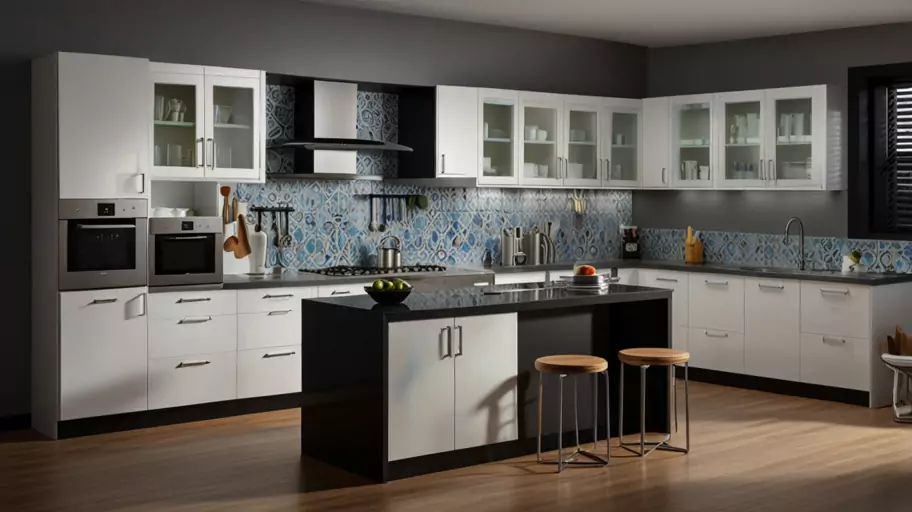
Long-Lasting Durability
Durability is one of the key selling points of PVC foam boards. In a kitchen, where exposure to heat, moisture, and spills is inevitable, the resilience of PVC foam boards ensures that they maintain their functionality and appearance for years. Unlike wood, which may warp or crack over time, PVC foam board cabinets remain sturdy and reliable.
Environmental Concerns of Kitchen Cabinet PVC Foam Board Furniture
Polyvinyl chloride, popular as PVC, is a material that frequently appears in home furnishings and construction, including PVC foam board kitchen cabinetry.
Its popularity stems from its affordability, durability, and resistance to moisture, making it an appealing choice for kitchen cabinetry. Still, these advantages come at a significant environmental cost.
Experts and environmentalists have raised concerns about the production, disposal, and overall ecological footprint of PVC materials, which are issues that every environmentally-conscious homeowner should consider when making material choices for their home.
Production and Disposal
One of the primary concerns surrounding PVC foam board kitchen cabinets lies in the environmental impact of PVC production and disposal. The processes involved in manufacturing PVC and managing its waste pose significant risks to both ecosystems and human health.
Toxic Chemicals in Production
The production of PVC involves the use of harmful chemicals, most notably chlorine and dioxins. Chlorine, a key component of PVC, is highly reactive and can contribute to the formation of dioxins, which are byproducts of the chemical manufacturing process.

Dioxins are persistent organic pollutants (POPs) that can accumulate in the environment, particularly in water bodies and soil. These chemicals may be links with a number of illnesses, including as cancer, reproductive difficulties, and developmental impairments, making them dangerous not just for the environment but also for human health.
PVC production can release harmful chemicals into the atmosphere, contributing to air pollution. Communities near PVC manufacturing plants are often at a higher risk of exposure to these toxins, making the environmental cost of kitchen cabinet PVC foam board furniture far more than just a matter of aesthetics.
Non-Biodegradable: PVC’s Longevity in the Environment
Another major concern with PVC foam board kitchen cabinets is their non-biodegradable nature. Once PVC products reach the end of their lifecycle, they do not break down naturally in the environment. Instead, they persist for hundreds of years in landfills, adding to the growing problem of plastic pollution.
As PVC decomposes, it can release harmful chemicals into the soil and groundwater, leading to long-term environmental contamination. The non-biodegradability of PVC means that every kitchen cabinet or other piece of PVC foam board furniture produced today could potentially persist in landfills for centuries, posing a significant environmental hazard.
Recycling Challenges
While PVC can technically be recycled, the process is complex and not widely practiced. Unlike materials such as aluminum or glass, which can be easily recycled, PVC recycling requires specialized facilities and technologies.
The recycling process for PVC is energy-intensive and can release toxic chemicals, making it less environmentally friendly than the recycling of other materials.
As a result, a significant amount of PVC waste ends up in landfills rather than being repurposed or recycled. This is a major drawback of using PVC foam board kitchen cabinets, as they contribute to the growing problem of plastic waste in the environment.
Health Risks Associated with PVC
PVC foam board kitchen cabinets can pose health risks due to the release of harmful chemicals over time. These risks stem from the off-gassing of volatile organic compounds (VOCs) and the use of phthalates, a type of plasticizer used to increase the flexibility of PVC.
Impact on Indoor Air Quality
Off-gassing refers to the release of chemicals from a material into the air. PVC is known to off-gas volatile organic compounds (VOCs), which can affect indoor air quality. In a kitchen environment, where cabinets are frequently opened and closed, the release of VOCs from PVC foam board kitchen cabinets can be particularly concerning.
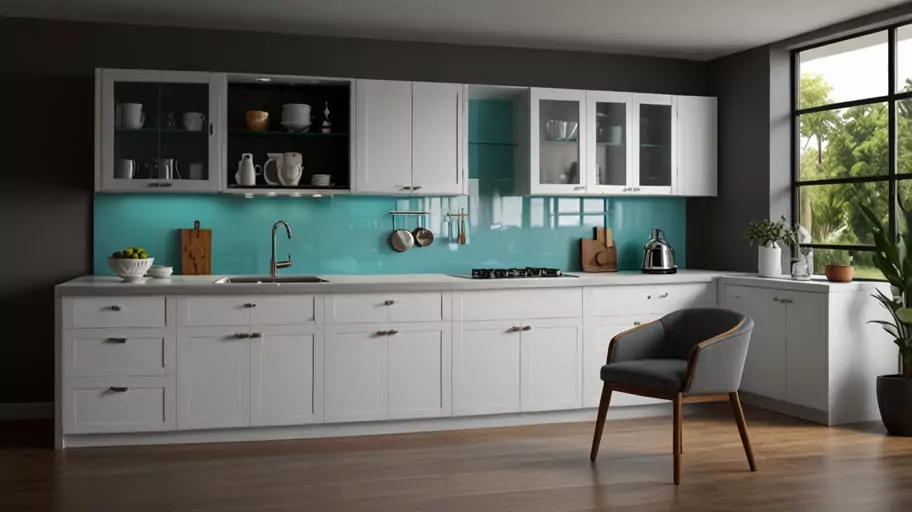
Poor indoor air quality has been linked to a variety of health issues, including respiratory problems, headaches, and allergic reactions. For homeowners who prioritize the health and safety of their indoor environment, the potential for off-gassing from PVC foam board furniture is a serious consideration.
Phthalates: A Hidden Health Hazard
If you want to impart PVC its flexibility, phthalates are frequently utilized as plasticizers in the manufacturing process.
Phthalates have the potential to leak out over time since they are not chemically bonded to the PVC matrix. This leaching can occur due to wear and tear or exposure to heat and light, leading to the release of these chemicals into the air or onto surfaces.
Phthalates have been linked to a range of health issues, including endocrine disruption, reproductive problems, and developmental delays in children.
With kitchen cabinet PVC foam board furniture being a common source of phthalates, it’s crucial to weigh the potential health risks when choosing materials for your kitchen, especially in households with young children or individuals sensitive to chemical exposure.
Environmental Impact of PVC Production and Use
The overall environmental footprint of PVC foam board kitchen cabinets is substantial. The production of PVC is not only resource-intensive but also contributes to pollution and energy consumption.
Contaminating Water and Soil
The production of PVC involves the release of harmful chemicals and pollutants into the environment. Chlorine, dioxins, and other toxic byproducts can leach into nearby water sources, contaminating rivers, lakes, and groundwater. This pollution can have devastating effects on aquatic ecosystems and local communities that rely on these water sources.
The disposal of PVC products, including PVC foam board kitchen cabinets, contributes to soil contamination. As PVC breaks down in landfills, it can release harmful chemicals into the soil, affecting plant life and potentially entering the food chain.
Energy Consumption
The manufacturing process for PVC is energy-intensive, contributing to its overall carbon footprint.
From the extraction of raw materials to the chemical processes involved in turning those materials into PVC, the production of kitchen cabinet PVC foam board furniture requires significant amounts of energy, much of which comes from non-renewable sources like coal and natural gas.
This high energy consumption adds to the environmental impact of PVC, making it a less sustainable choice compared to materials like wood, bamboo, or recycled alternatives. For homeowners who are mindful of their carbon footprint, the energy demands of PVC foam board kitchen cabinets are a key factor to consider.
Eco-Friendly Alternatives to PVC Foam Board Cabinets
If you’re concerned about the environmental impact of PVC foam board kitchen cabinets, there are several eco-friendly alternatives that offer the same functionality while minimizing your ecological footprint. These materials are not only sustainable but also provide aesthetic appeal and durability.
Wood
Wood is one of the most environmentally friendly materials for kitchen cabinets, provided it is sourced sustainably. When harvested from responsibly managed forests, wood is a renewable resource that can last for decades with proper care and maintenance. It also has the advantage of being biodegradable, meaning it won’t persist in landfills for centuries like PVC.
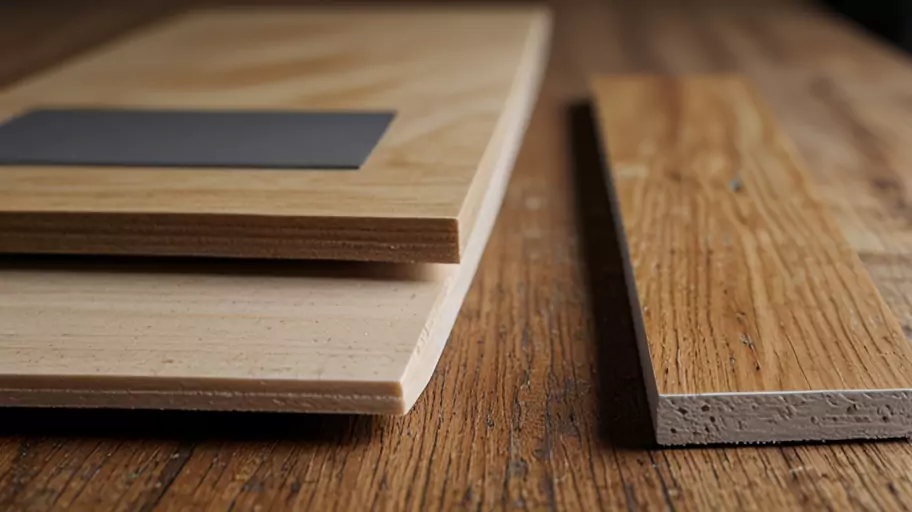
Wood offers a timeless aesthetic appeal that many homeowners prefer over synthetic materials like PVC. Natural wood grain and texture add warmth and character to a kitchen, making it a popular choice for those seeking a rustic, traditional, or even modern design.
Bamboo
Bamboo is another excellent alternative to kitchen cabinet PVC foam board furniture. Known for its rapid growth and renewability, bamboo is an eco-friendly option that is both durable and sustainable. Bamboo can be harvested in a fraction of the time it takes to grow hardwood trees, making it a more sustainable choice for cabinetry.
Bamboo is also highly resistant to moisture, making it an ideal material for kitchens where humidity and spills are common. Its natural strength and flexibility ensure that bamboo cabinets can withstand daily use while maintaining their integrity and appearance.
Recycled Materials
For those looking to minimize waste and promote sustainability, cabinets made from recycled materials are an innovative option. Recycled wood, reclaimed materials, or even composite materials made from post-consumer waste can provide a stylish and eco-friendly solution for your kitchen cabinets.
Recycled materials reduce the demand for new raw materials and help divert waste from landfills, making them an excellent choice for homeowners who want to make a positive impact on the environment. Cabinets made from recycled materials often have a unique and custom look, adding character to your kitchen.
Our Latest Posts
Outdoor Table Plan: what you’ll wish you knew sooner
Stunning Outdoor Table Decor Ideas to Elevate Your Next…
Outdoor Table DIY – But Not Like You’ve Ever…
Mixed Opinions: Expert Advice on Kitchen and Home Décor
In kitchen renovation or remodel projects, choosing the right materials for cabinetry is a critical decision. Cabinets are the backbone of a kitchen, contributing to both its functionality and aesthetic appeal.
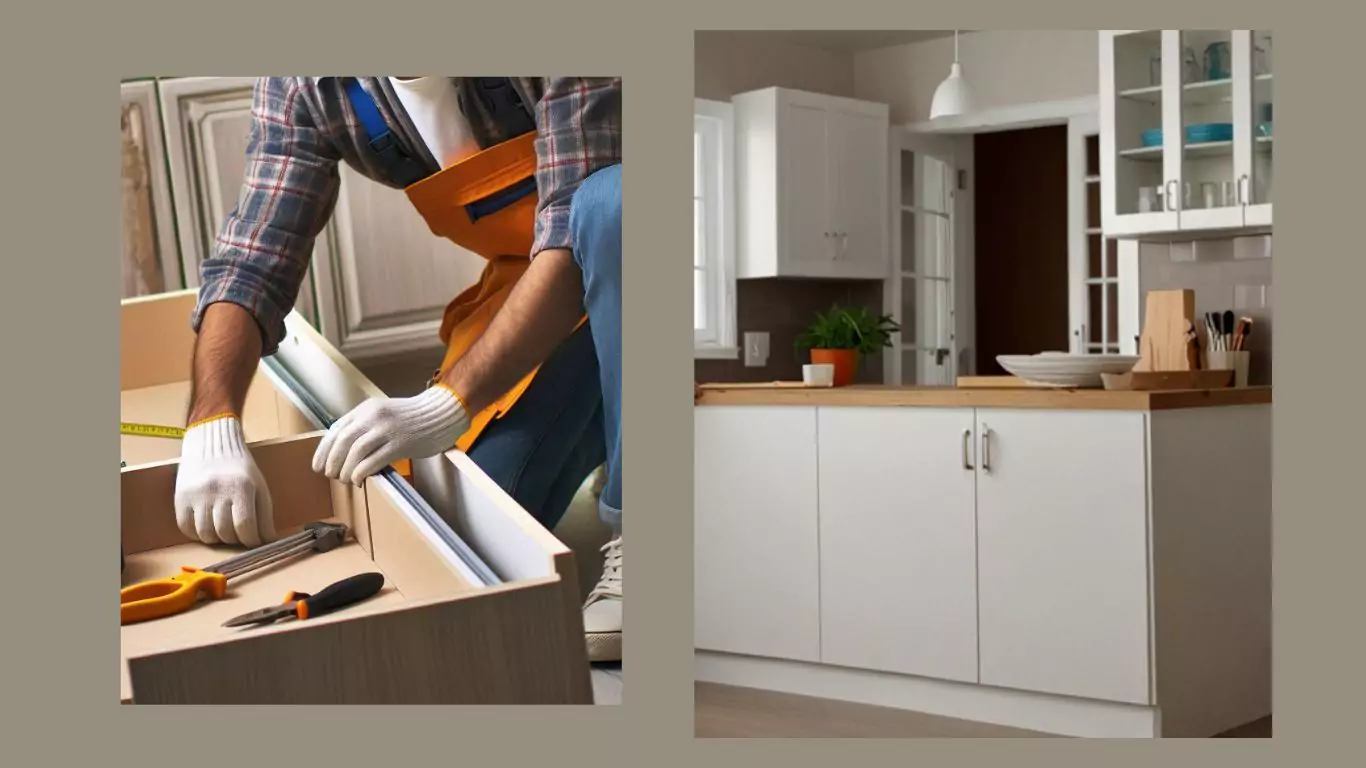
Recently, PVC foam board kitchen cabinets have gained popularity due to their affordability, durability, and ease of maintenance. Experts in kitchen and home décor, yet have differing views regarding this material.
Pros Highlighted by Experts
Affordability
One of the most commonly cited advantages of PVC foam board kitchen cabinets is their affordability. Experts agree that for homeowners looking to renovate their kitchens on a budget, PVC foam boards offer a cost-effective alternative to traditional materials like hardwood or metal.
While custom wood cabinets can be costly due to the price of raw materials and craftsmanship involved, PVC foam board cabinets are factory-made, which significantly reduces labor and material costs.
The budget-friendly nature of these cabinets makes them accessible to a wider range of homeowners, from first-time buyers to those seeking a budget-conscious kitchen makeover.
For example, kitchen cabinet PVC foam board furniture is often recommended by home decor experts to those undertaking DIY renovations or for rental properties where budget constraints are more critical. The price difference between wood and PVC can be substantial, making the latter a popular choice for budget-savvy homeowners.
Durability
Another major advantage of PVC foam board cabinets is their durability. Kitchen environments are often exposed to moisture, heat, and frequent spills, which can damage traditional materials like wood.
Experts point out that PVC foam board kitchen cabinets are resistant to moisture, termites, and stains, making them a practical choice for high-traffic areas like the kitchen.
Because PVC foam boards do not absorb water, they do not swell, warp, or rot like wood cabinets can in humid conditions. This makes them particularly useful in regions with high humidity or in kitchens where spills and splashes are common.
Termite resistance is another advantage often highlighted by experts, as it eliminates the need for pest control treatments that wooden cabinets typically require.
kitchen cabinet PVC foam board furniture is also resistant to oils and other substances that frequently cause stains in the kitchen.
Cleaning up spills is relatively easy, and homeowners do not have to worry about long-term staining or damage. This durability factor contributes to the long lifespan of PVC foam board cabinets, making them a solid investment for budget-conscious homeowners looking for materials that stand the test of time.
Low Maintenance
Low maintenance is a significant advantage emphasized by many home and kitchen decor experts. PVC foam board kitchen cabinets are incredibly easy to clean and maintain, which is a major draw for homeowners who want a hassle-free kitchen.
Unlike wood, which needs periodic sealing or painting to prevent wear and tear, kitchen cabinet PVC foam board furniture requires minimal upkeep.
The non-porous surface of PVC foam boards means that they do not absorb dirt, grime, or oils, making them simple to clean with a damp cloth.
Because they are resistant to moisture, mold and mildew are less likely to grow on them compared to materials like wood or MDF. Experts recommend these cabinets for homeowners who prefer a low-maintenance lifestyle or for rental properties where maintenance might be less frequent.
This ease of maintenance makes PVC foam board kitchen cabinets particularly attractive to families with young children or those who frequently entertain guests, as they can withstand spills and messes with minimal effort to keep them looking pristine.
Concerns Raised by Experts
Environmental Impact
One of the main criticisms of PVC foam board kitchen cabinets comes from experts concerned with environmental sustainability. PVC is a plastic product, and the production, use, and disposal of PVC materials can have a negative impact on the environment.
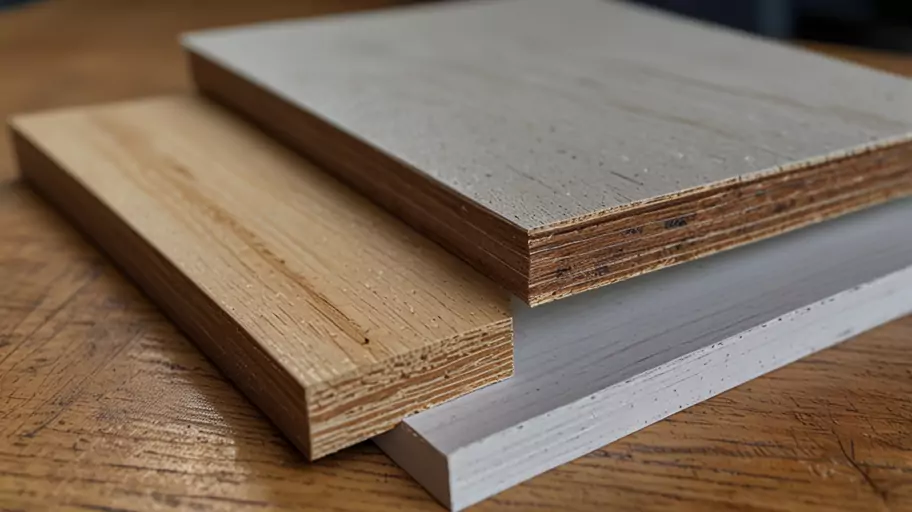
PVC foam boards are non-biodegradable, meaning they will not break down naturally in the environment. This creates long-term waste management issues, as discarded PVC cabinets can contribute to landfill accumulation.
The production process for PVC releases harmful chemicals into the environment, including dioxins, which can be detrimental to both human health and ecosystems.
Experts in sustainable home design often recommend that homeowners looking for eco-friendly options consider alternative materials such as reclaimed wood, bamboo, or recycled materials for their kitchen cabinets.
These materials are biodegradable or can be sourced in an environmentally responsible way, offering a more sustainable option for those who prioritize green living.
While kitchen cabinet PVC foam board furniture may be affordable and low-maintenance, its environmental footprint is a significant drawback for homeowners who prioritize sustainability in their home improvement decisions.
Aesthetic Appeal
While PVC foam board kitchen cabinets come in a variety of colors, finishes, and designs, many experts feel that they do not offer the same aesthetic appeal as natural materials like wood.
Wood cabinets bring a natural warmth and beauty to a kitchen that is hard to replicate with synthetic materials. For homeowners who want a high-end, luxurious look, PVC foam board cabinets may fall short.
Even though PVC foam boards can be designed to mimic wood grain and other natural textures, some experts argue that the tactile feel and depth of real wood are difficult to duplicate. PVC foam board cabinets might feel less sturdy and lack the rich, organic look that many homeowners desire in a kitchen.
This has led experts to suggest that PVC foam board kitchen cabinets might be better suited for modern or minimalist kitchen designs, where sleek surfaces and neutral colors are preferred.
Homeowners who want a rustic, farmhouse, or traditional kitchen aesthetic might find wood or other natural materials more in line with their vision.
Heat Resistance
Another concern raised by home decor experts is the lower heat resistance of PVC foam board kitchen cabinets. While PVC is more heat-resistant than hollow-core PVC, it does not fare as well as materials like wood, stainless steel, or solid surface countertops when exposed to high temperatures.
In a kitchen, where ovens, stovetops, and other heat-generating appliances are used frequently, the proximity of PVC foam board cabinets to heat sources can be a cause for concern.
Over time, exposure to heat may cause the material to soften, discolor, or warp, especially if it is installed too close to a stove or oven. Experts recommend placing PVC foam board cabinets at a reasonable distance from direct heat sources and using heat-resistant materials for cabinets or surfaces near cooking appliances.
For homeowners who love to cook and use their kitchen heavily, this limitation may be an important factor to consider when choosing cabinetry materials.
Finding the Right Fit for Your Needs
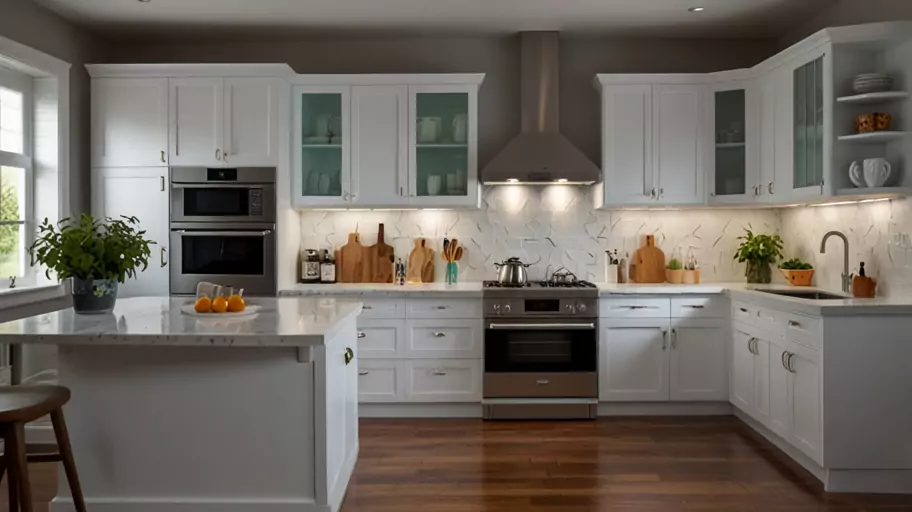
While PVC foam board kitchen cabinets have clear advantages in terms of affordability, durability, and low maintenance, there are valid concerns about their environmental impact, aesthetic appeal, and heat resistance.
Based on expert opinions, it’s clear that the decision to use kitchen cabinet PVC foam board furniture depends on individual preferences, priorities, and values.
When PVC Foam Board Cabinets Make Sense:
- Affordability is a Priority: If budget is a key consideration and you want cabinets that look modern and sleek without breaking the bank, PVC foam board kitchen cabinets are an excellent option.
- Low Maintenance is Essential: For busy families or homeowners who prefer low-maintenance options, the easy-to-clean nature of PVC foam board cabinets makes them highly practical.
- Moisture-Resistant and Durable: In kitchens exposed to high moisture levels, PVC foam board cabinets offer a moisture-resistant solution that won’t rot, warp, or attract termites.
When You Might Consider Other Materials:
- Environmental Sustainability is Important: If eco-friendliness is a priority, PVC foam board kitchen cabinets may not be the best fit due to their environmental drawbacks. Consider more sustainable alternatives like bamboo, reclaimed wood, or recycled materials.
- High-End Aesthetics are a Must: For homeowners who want a luxurious, high-end kitchen, the natural warmth and beauty of wood might be more appealing than the synthetic feel of PVC foam board cabinets.
- Heat Resistance is Critical: If you do a lot of cooking and need cabinets that can withstand heat, consider materials that offer better heat resistance than PVC foam boards.
So What We Learned
Experts in home and kitchen decor offer a mixed but nuanced perspective on PVC foam board kitchen cabinets. While they appreciate the affordability, durability, and low-maintenance benefits, there are legitimate concerns about environmental sustainability, aesthetics, and heat resistance.
The decision to use kitchen cabinet PVC foam board furniture comes down to your specific needs and preferences. If you’re seeking a budget-friendly, moisture-resistant, and low-maintenance solution, PVC foam board cabinets are a practical choice.
Investigating alternate materials, even so, might be beneficial if heat resistance, luxury aesthetics, or sustainability are important to you.
Consider your long-term goals, lifestyle, and kitchen usage patterns when choosing your kitchen cabinets. Consulting with design experts and weighing the pros and cons will help you make the right decision for your home.



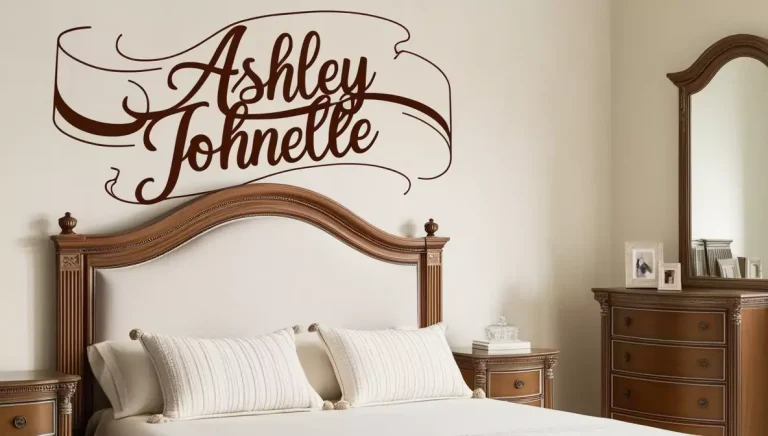
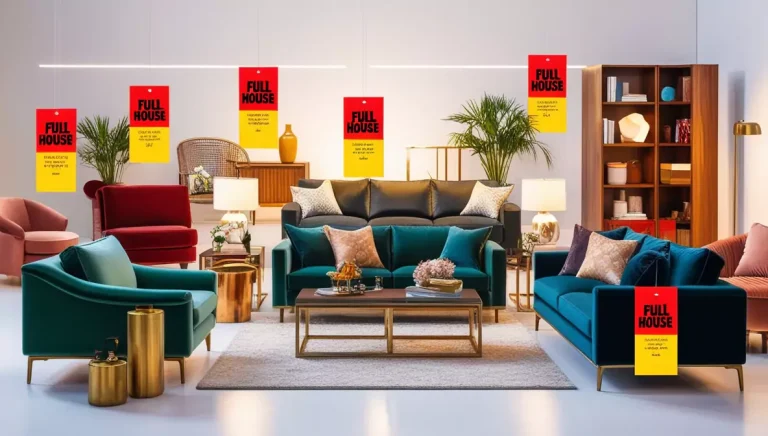
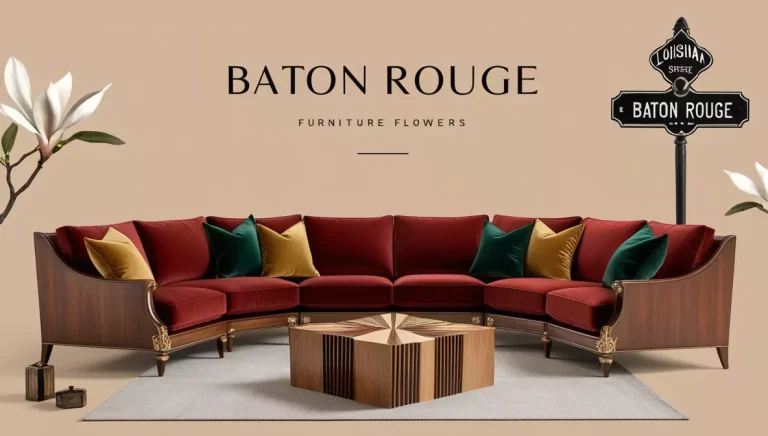
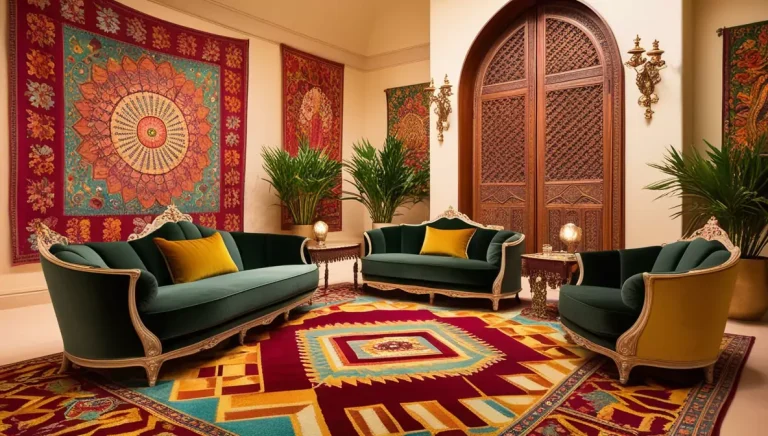
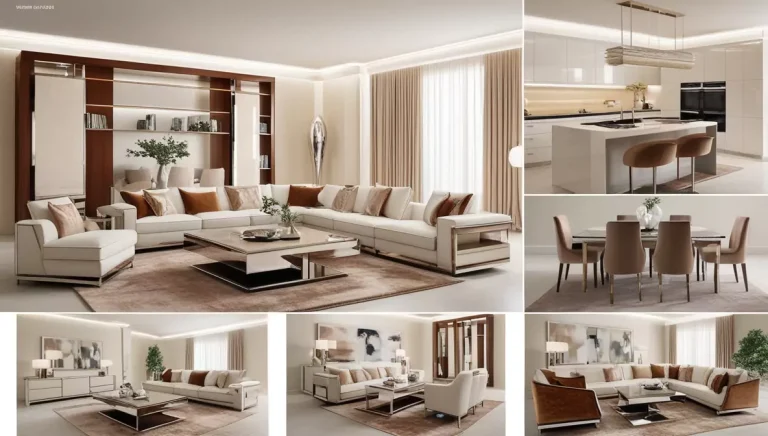
ABS Pipes in Iraq Elite Pipe Factory in Iraq is a leader in the production of ABS pipes, which are valued for their strength, toughness, and resistance to impact and chemicals. Our ABS pipes are manufactured to the highest standards, ensuring reliability and long-lasting performance in various applications. As one of the best and most reliable pipe manufacturers in Iraq, Elite Pipe Factory is committed to delivering products that meet the needs of our customers. For detailed information about our ABS pipes, visit elitepipeiraq.com.
قنوات الكابلات الكهربائية (المعدنية) يفخر مصنع إيليت بايب في العراق بتقديم قنوات الكابلات الكهربائية (المعدنية) ذات الجودة العالية، المصممة لتوفير قوة وحماية فائقة لأنظمة الأسلاك الكهربائية. تم تصميم قنواتنا المعدنية لتحمل الظروف القاسية، مما يوفر حماية قوية ضد الصدمات الميكانيكية والتداخل الكهرومغناطيسي. مثالية للتطبيقات الشديدة، هذه القنوات ضرورية لضمان سلامة وموثوقية التركيبات الكهربائية. كأحد الأسماء الرائدة في الصناعة، يتميز مصنع إيليت بايب بجودة عالية وموثوقية في إنتاج القنوات المعدنية التي تلبي أقسى المعايير. اكتشف المزيد على موقعنا: elitepipeiraq.com.
For high-quality bulk verified accounts, choose https://AccStores.com. We offer PVA accounts that are created using unique server IPs, providing the security and reliability you need. Enjoy fast delivery and great service with every purchase from our extensive selection of verified accounts.
Uncover More:
https://AccStores.com
Thank You Kindly!
rüyada köz
Устали от отказов? mirtinvest.ru — это ваш шанс получить микрозайм на карту онлайн без лишних вопросов и звонков оператора. Всё, что требуется, — паспорт и именная карта. Более 90% заявок получают положительное решение на суммы до 30 000 рублей. Наш сервис работает с лучшими МФО, гарантируя простоту оформления и быстрые выплаты. Получите деньги уже сегодня без лишних преград!